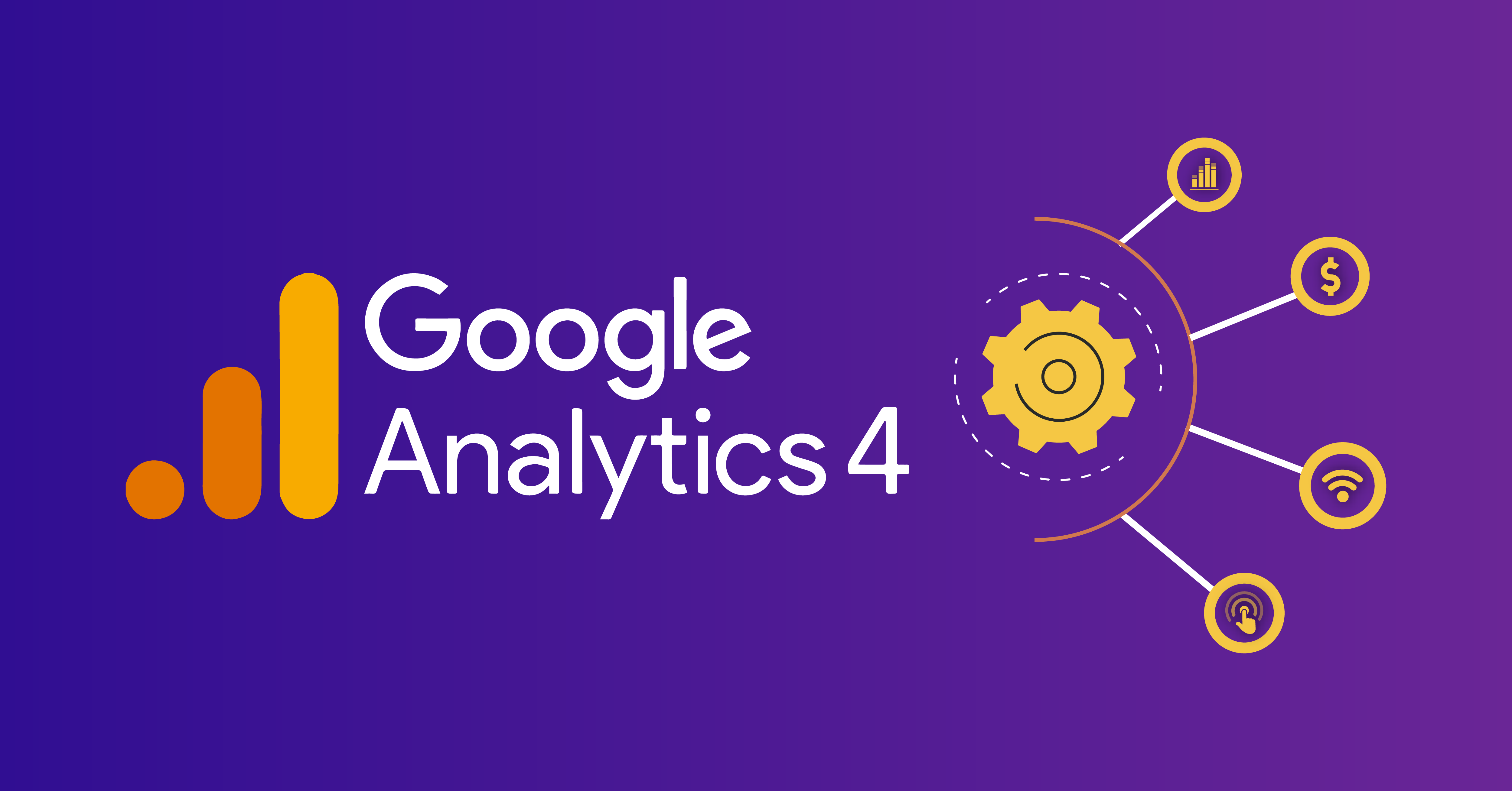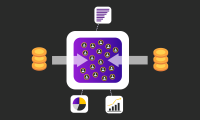What is Google Analytics 4 and How is it Different From Universal Analytics?
For publishers, web analytics is a pivotal gateway to optimization, transformation, and incremental profitability. By harnessing the power of analytics, publishers gain invaluable insights into customer journeys and behavior, enabling them to fine-tune their strategies and enhance user experiences. Among the multitude of web analytics platforms available, Google Analytics stands out as the foremost choice for publishers due to its unparalleled versatility, trustworthiness, and widespread adoption.
With Universal Analytics switching to Google Analytics 4 (GA4), the ad tech community is buzzing with the Universal Analytics vs GA4 debate. The current digital landscape is an opportune moment to embrace this advanced version of web analytics tools and bid farewell to the previous version. With new features and powerful insights, GA4 opens doors to a new era of data-driven decision-making and empowers businesses to unlock their true potential in the digital landscape.
What is Google Analytics 4?
Google Analytics 4 (GA4) can be considered the next generation of Google Analytics, which is designed to replace both Universal Analytics (UA) and the Google Analytics 360 Suite (GA360). GA4 introduces a new approach to web analytics with advanced features and capabilities, such as reporting, event-based data models, enhanced cross-platform tracking, and machine learning-powered insights.
While UA and Google Analytics 360 Suite continue to be supported, Google encourages businesses to gradually transition to GA4 to leverage its latest functionality and stay ahead in the evolving digital landscape.
Effective July 1, 2023, Universal Analytics (UA) properties will discontinue data collection, followed by the phasing out of GA360 accounts on July 1, 2024. After these dates, GA4 will serve as the exclusive analytics platform for Google. This transition highlights Google’s commitment to GA4 as the primary tool for businesses to gather and analyze data, ensuring a unified and future-focused approach to web and app analytics.
Should publishers switch to GA4?
Yes! Arrival of GA4 is one of top programmatic trends of 2023. This upgraded version of Universal Analytics is designed to keep publishers relevant and competitive, especially in a cookie-less world where data privacy regulations are becoming more stringent. Publishers should switch to Google Analytics 4 right now as it will give them the opportunity to customize the setup including using the latest site tag.
GA4 offers varied enhancements that allow publishers to track important metrics and analyze data from both web and app platforms. By solely relying on older versions like Universal Analytics (UA), publishers may limit their ability to gather comprehensive data and insights across multiple platforms. This can hinder their understanding of user behavior, engagement, and the effectiveness of their marketing efforts across various channels.
What if publishers will not make the switch to GA4?
If publishers do not set up their own Google Analytics 4 (GA4) property, Google will automatically configure one for them, including a few basic settings that align with their existing Universal Analytics property.
For Universal Analytics customers using website tags like gtag.js or analytics.js (including through tag management systems like Google Tag Manager), Google will generate a connected site tag to direct traffic to the new GA4 property. This process aims to reuse existing tags whenever possible. However, if users prefer not to have a GA4 property automatically created and configured based on their existing Universal Analytics property and tags, they have the option to opt out.
Universal Analytics vs GA4- What is the difference?
- App and website tracking
Universal Analytics (UA) primarily focuses on tracking web-based analytics on user behavior, conversions, and other metrics related to web analytics. It also has the ability to track mobile apps however it uses the Google Analytics SDK for mobile app tracking.
In contrast, Google Analytics 4 (GA4) is designed to provide a more unified and cross-platform tracking experience. It supports tracking for both web and app properties and combines web and app data into a single data model, allowing content creators to gain a comprehensive understanding of user behavior across different platforms avoid these in-app advertising mistakes.
- Event-based tracking
In Google Analytics 4, events serve as the primary unit of measurement for tracking user interactions, and they exhibit a distinct structure when compared to Universal Analytics. An event within GA4 signifies a particular action or activity taking place on a website or app, such as page views, clicks, form submissions, video plays, or any custom user interactions defined by the publisher or creator.
Compared to the pageview-based tracking employed by UA, GA4’s event-based tracking approach enables publishers to meticulously monitor and evaluate precise actions and events on their website or app. Furthermore, it provides a deeper understanding of user engagement and conversion events based on the parameters they want to track.
- Use of first-party cookies
GA4 integrates with Consent Mode, a feature that allows websites to adjust data collection based on user consent preferences. This ensures compliance with privacy regulations and in the wake of depreciation of cookies, it enables cookieless tracking.
GA4 can also use IP address analysis to infer user location and provide insights on regional activity without relying on cookies. However, it’s important to note that IP addresses are anonymized for privacy protection.
- Enhanced User metrics
The calculation for the Active Users metric differs between Universal Analytics (UA) and Google Analytics 4 (GA4). In UA, the primary user metric is “Total Users,” which represents the total number of unique users who have visited the website or application and logged an event.
On the other hand, GA4 user ‘Active Users’ as the primary user metric which refers to the activity of users who have engaged with the website or app. GA4 tracks user engagement and session activity through various events and interactions, allowing publishers and content creators to analyze the behavior and activity of active users on the site or app. The gathered metrics can help publishers ensure that their website is mobile-friendly.
- Advanced user identification
In Google Analytics 4 vs Universal Analytics, the primary identifier used is the client ID- a randomly generated, unique identifier that is stored in a browser cookie. This allows UA to track user behavior across multiple sessions and devices. However, it does not provide a consistent way to identify individual users across different devices or when they are not logged in.
On the other hand, Google Analytics 4 introduces a more advanced approach to user identification by introducing the concept of user ID- an identifier that is assigned to a user when they log in or create an account on the publisher’s website or app. This allows GA4 to track and analyze user behavior consistently across devices and sessions, even if the user is not logged in.
- Users and sessions traffic
In GA4, users and sessions are closely related, but they are tracked and reported in a slightly different manner compared to Universal Analytics (UA). The Users metric represents the number of unique individuals, identified by their client ID, who has visited the creator’s website. Sessions represent the total number of individual sessions initiated by all users.
GA4 defines a session as a collection of events that occur within a specific timeframe. This means that a session in GA4 can span multiple days if a user remains engaged with your website or app.
What are the features of GA4?
- Cross-device tracking
One GA4 feature that has been generating a buzz like no other is the remarkable ability seamlessly track user interactions across diverse devices, properties, and domains. With this groundbreaking cross-device tracking capability, marketers gain an unprecedented understanding of user behavior, paving the way for data-driven decisions that optimize marketing strategies, elevate personalized user experiences, and drive compelling engagement and conversions.
This invaluable integration offers a panoramic view of the user journey, painting a vivid picture of their preferences, patterns, and interactions as they seamlessly transition between desktops, smartphones, tablets, and more.
- Google Search Console Integration
The integration between Google Analytics 4 and Google Search Console offers content creators a deeper understanding of their organic search performance and user behavior which helps them improve their SEO. Initially, this integration was not available in the version of GA, but with time this feature has been introduced. Publishers can link their Google Analytics 4 web data stream with a Search Console website property and access two new reports.
- Google Organic Search Queries
It provides insights into the specific search queries that drive organic traffic to the website. It showcases search queries alongside associated Search Console metrics, allowing businesses to evaluate keyword performance and relevance.
- Google Organic Search Traffic
It focuses on landing pages and their performance in organic search, enabling businesses to identify high-engagement pages and track conversions. By utilizing dimensions such as Country and Device, businesses can further analyze user behavior based on location and device type.
- Data-driven Attribution Model
While Universal Analytics allowed for some customization and the creation of custom attribution models, it did not include some important models as part of its native feature set. However, with the introduction of GA4, Google has revamped its attribution capabilities, offering marketers more flexibility and advanced modeling options.GA4 offers a range of attribution models:
- First-Click Attribution: This model attributes all the credit for a conversion to the first marketing interaction or touchpoint that a user engages with.
- Last-Click Attribution: In this model, which was also a part of Universal Analytics, all the credit for a conversion is assigned to the last marketing interaction or touchpoint that directly leads to the conversion.
- Linear Attribution: This attribution model distributes equal credit to each marketing interaction or touchpoint along the customer journey.
- Time Decay Attribution: This model gives more credit to marketing interactions or touchpoints that occur closer in time to the conversion.
- Position-Based Attribution: Also known as U-shaped attribution, this model assigns the majority of the credit to the first and last touchpoints while distributing the remaining credit among the middle touchpoints.
- Anomaly Detection
In the previous version of Google Analytics (Universal Analytics), the feature was known as “Intelligence Events” or “Automatic Alerts.” It provided automated notifications when significant changes or anomalies were detected in the data. With the introduction of Google Analytics 4 (GA4), the anomaly detection feature has been further enhanced. It uses advanced statistical techniques to identify anomalies in time-series data and within specific segments.
The updated anomaly detection in GA4 provides more accurate and actionable insights by analyzing data patterns and deviations. Publishers can get an in-depth analysis of anomalies in specific metrics and make data-driven decisions to improve overall performance.
- AI-Predictive Analysis
Google Analytics 4 (GA4) provides comprehensive insights for e-commerce website campaigns by offering predictive analysis capabilities. It tracks various metrics and user behavior to gain a better understanding of purchasing behavior and user acquisition. With the integration of Google’s machine-learning expertise, GA4 automatically enhances your data and predicts the future behavior of your users.
Through predictive metrics, GA4 allows you to gather valuable insights about your customers simply by collecting structured event data. This predictive analysis empowers businesses to anticipate user actions, make informed decisions, and optimize their marketing strategies.
Here are three predictive analytics offers by GA4 currently:
- Purchase Probability
Purchase probability refers to the likelihood that a user, who has been active within the last 28 days, will complete a specific conversion event within the next 7 days. It provides valuable insights into the probability of user engagement and conversion within a specified timeframe.
- Churn Probability
Churn probability represents the probability that a user, who has been active on your app or website in the last 7 days, will not remain active within the subsequent 7 days. It helps e-commerce websites and app publishers identify potential areas for improvement in user retention strategies.
- Predicted Revenue
Predicted revenue estimates the expected revenue from all purchase conversions that are anticipated to occur within the next 28 days. It focuses on users who have been active within the last 28 days and predicts the potential revenue that can be generated from their future purchases.
With a strong emphasis on tracking, the upgraded version of Google Analytics also recognizes the importance of striking a balance between ads and user experience. It enables businesses to gather invaluable insights while upholding user privacy, ensuring the delivery of personalized experiences without compromising user data protection.
It is highly recommended for publishers proactively migrate from Google Analytics to Google Analytics 4 instead of waiting until the automatic transition on July 1st, 2023. There is a learning curve involved in adapting to the advanced features of GA4. However, by making the switch sooner rather than later, users can promptly begin harnessing the benefits it offers.




Leave a Reply